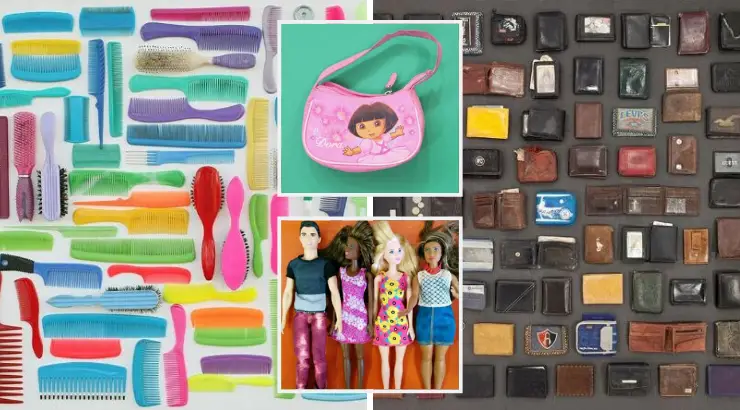News
Border Patrol Threw Away Migrants’ Belongings, but This Janitor Saved and Photographed Them
The photos are a glimpse of the pain, trauma, and sadness experienced by many at the southern border of the US.

(TMU) — Items reportedly considered potentially lethal or nonessential are taken daily by border officials from migrants and asylum seekers as they attempt to cross the U.S.-Mexico border.
One man, Tom Kiefer, who was working as a janitor from 2003 to 2014 at a U.S. Customs and Border Protection facility in Arizona, decided to collect and photograph these discarded items.
From a distance his work is reminiscent of bright pop art, but the truth is that these images are a glimpse of the pain, trauma, and sadness experienced by many at the southern border of the United States.
To Kiefer, tossing personal belongings like the items he photographed “underscores the cruelty of the tentative punishment that the government feels the need to levy against these people. It’s clear the majority of which are decent, contributing and who want nothing more than a better life for themselves or for their family.”
The photographer’s journey working at the facility began in 2003 when he took a part-time job as a janitor after having moved to Arizona in 2001, leaving a graphic design career behind.
Kiefer recalls during his first two years at the facility, when agents would collect canned food that migrants carried with them and donate it to a local food bank, rather than allowing them to keep it. Two short years later, after a change in leadership, agents were required to toss, not donate, the food.
“For the next two years, I witnessed all this food being needlessly thrown out,” Kiefer said.
Kiefer asked permission to collect the food. It was then that he discovered the other personal items that were being tossed and forgotten—a symbol of the sacrifice the migrants and asylum seekers were making.
The photographer began by collecting around 20 toothbrushes before he began to find items that held a lot more weight. Kiefer explained:
“When I started seeing a rosary, or a Bible, or a wallet, I realized that no one would believe me if I had not collected these items.”
Kiefer collected items belonging to the migrants for a six years before he even began photographing them.
What started with a photograph of a pile of water bottles quickly morphed into a carefully curated display of groups of items like blankets, medications, and mobile phones, starting with brushes and combs on a plain black background.
“After I shot it and looked at it, it was like, ‘Oh my God, this is it,’” Kiefer said.
According to Kiefer, about 90% of the belongings he has photographed have not been photographed.
“It’s not physically possible. And to do it in the manner in which I’m doing, these objects are sacred and I come from a place of deep reverence and respect. … I’d have to live to be 100.”
In the end, the 60-year-old photographer plans to donate the items so they will live on as a historical documentation of how the U.S. government has treated migrants and asylum seekers at its southern border. Kiefer hopes his project will educate Americans and inspire them to act.
“Our government is actually taking away a Bible or rosary. I mean, how twisted is that?”
From now until March 8th, Kiefer’s work is on display at the Skirball Cultural Center in Los Angels, California in an exhibition called “El Sueño Americano / The American Dream: Photographs by Tom Kiefer.”
By Emma Fiala | Creative Commons | TheMindUnleashed.com
Typos, corrections and/or news tips? Email us at Contact@TheMindUnleashed.com
